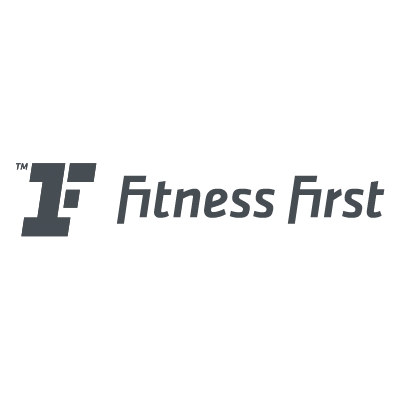How To Work With Clients With Chronic Illness

Do you know how to work with a personal training client who is suffering from a chronic illness?
Long-term health conditions are on the rise – almost 50% of adults in the UK are now living with a long-standing medical complaint.
High blood pressure, lower back problems, and depression are the most common issues people are living with long-term.
However, there are a whole host of other chronic illnesses from asthma, heart disease, and diabetes to osteoporosis, fibromyalgia, and inflammatory bowel disease you might encounter with your clients.
But what do you need to know when training someone with a condition like this which can affect their ability to exercise?
Where do you start when designing a personalised program when their health can change on a day-to-day basis?
And how do you adapt to ensure the workouts and exercises you’re doing with them are actually improving their health and quality of life?
It’s important you know what to do...so this article helps you understand chronic illnesses, how to carry out a watertight health assessment, and how to design safe and effective workout programs that set you apart from other trainers.
Everything you need to know is in here...
Understanding Chronic Illnesses
You’ll always encounter clients with a range of health issues in your job as a personal trainer. Some of the people you work with may be suffering from chronic illness which present you with unique challenges.
It’s essential for you to understand these conditions so you can tailor exercise programs that meet their needs and promote well-being. This knowledge will not only make you a more effective trainer but also set you apart in a competitive industry.
What are Chronic Illnesses?
Definition and Common Types
Chronic illnesses are long-term health conditions that can be managed but often not cured. These conditions can persist for years and require ongoing medical attention and lifestyle adjustments. Some common types include:
- Diabetes: A metabolic disorder where the body cannot regulate blood sugar levels effectively.
- Heart Disease: Conditions affecting the heart, including coronary artery disease and heart failure.
- Arthritis: Inflammation of the joints that can cause pain and stiffness.
- Chronic Obstructive Pulmonary Disease (COPD): A group of lung diseases that block airflow and make breathing difficult.
- Asthma: A condition in which your airways narrow and swell, producing extra mucus, leading to difficulty in breathing.
These illnesses vary significantly in how they affect individuals, so understanding each client’s unique situation is crucial to be able to work with them safely and effectively as a trainer
The Impact of Chronic Illnesses on Daily Life and Physical Activity
If you’ve never lived with a chronic illness it can be difficult to understand how this can impact your clients day to day. But these long-term conditions can significantly impact a person’s daily life and physical capabilities. For instance:
- Fatigue: Many chronic illnesses cause persistent tiredness, affecting a client’s energy levels and motivation.
- Pain and Discomfort: Conditions like arthritis and fibromyalgia can cause constant pain, limiting movement and exercise options.
- Breathing Difficulties: Respiratory conditions like COPD and asthma can make cardiovascular exercises challenging.
- Mobility Issues: Joint problems or muscle weakness may limit a client’s range of motion and ability to perform certain exercises.
Recognising these impacts allows you to design programs that are both safe and effective, enhancing your clients’ quality of life and keeping them engaged in their fitness journey.
The Role of Exercise in Managing Chronic Illnesses
The Benefits of Physical Activity for Managing a Chronic Illness
Exercise plays a pivotal role in managing chronic illnesses and helping people improve the quality of their life. Here are some of the ways that a regular fitness regime can help:
- Improves Cardiovascular Health: Regular physical activity strengthens the heart and improves circulation, which is beneficial for clients with heart disease and diabetes.
- Enhances Mobility and Flexibility: For those with arthritis or other joint issues, specific exercises can improve joint function and reduce pain.
- Boosts Respiratory Function: Controlled and gradual aerobic exercise can improve lung capacity and efficiency in clients with respiratory conditions.
- Regulates Blood Sugar Levels: For diabetics, exercise helps in maintaining healthy blood glucose levels.
- Mental Health Benefits: Physical activity releases endorphins, which help reduce stress, anxiety, and depression, common in people living with chronic illnesses.
A 2020 study published in the journal BMC Public Health highlights that regular, moderate exercise can lead to significant improvements in physical and mental health for individuals with chronic conditions (Posadzki et al., 2020). The work you do with your clients in the gym will not only help them better manage their illness, but also give them a better quality of life.
By incorporating these benefits into your training programs, you help clients not only manage their illnesses but also improve their overall quality of life.
Initial Client Assessment and Communication
Training clients who have chronic illnesses requires a thorough understanding of their health status. It’s even more important to keep open and ongoing communication with them as their health and the way they are feeling can change considerably from day to day. This approach ensures you can create and adjust exercise programs that cater to their specific needs while building a strong, trusting relationship.
Conducting Comprehensive Health Assessments
Before you put pen to paper on designing an exercise program for your client, it's crucial to conduct a detailed health assessment. This step will help you fully understand your client’s medical background, current physical capabilities, and health challenges.
Gathering Medical History and Current Health Status
Start by collecting comprehensive medical history. To do this, you will want to ask your clients about:
- Diagnosed Conditions: Understanding their chronic illnesses, when they were diagnosed, and the severity of their condition.
- Medications: Knowing the medications they are taking, as some can affect physical performance and tolerance to exercise.
- Previous Injuries or Surgeries: This information will help tailor exercises to avoid re-injury or discomfort.
- Current Symptoms: Regular monitoring of symptoms like pain, fatigue, and breathing difficulties is essential.
Remember: Always ensure that your clients provide medical clearance from their healthcare provider before beginning any new exercise regimen. This step is crucial for safety and aligns your program with medical advice.
Understanding Your Client's Limitations and Capabilities
Once you have their medical history, assess their current physical abilities. This assessment should include:
- Physical Tests: Simple tests to evaluate strength, flexibility, endurance, and balance.
- Functional Movements: Observing how clients perform basic movements like squats, lunges, or lifting.
- Pain and Discomfort Levels: Identifying movements or activities that cause pain or discomfort.
By thoroughly understanding their limitations and capabilities, you can design a program that challenges them appropriately without risking injury.
Establishing Open and Honest Communication
Communication is key when working with clients who have chronic illnesses because their health can change from day to day. They might turn up at the gym one day feeling low on energy, struggling with more pain than usual, or with breathing difficulties. By maintaining good communication and having regular check-ins, you can plan ahead and make any adjustments you need to their program. Having regular open and honest dialogue with them will build trust and ensures they feel safe and cared for under your guidance.
Building Trust with Clients
Establishing trust starts from the first meeting with you and your client. You don’t just want to build rapport, but also show them empathy and understanding about their condition. You can do this by...
- Listening Actively: Pay close attention to their concerns and experiences without interrupting.
- Showing Empathy: Acknowledge the challenges they face and express genuine interest in helping them improve their quality of life.
- Being Transparent: Clearly explain your training approach and the reasons behind specific exercises or modifications.
Trust is built over time, so continue to demonstrate your commitment to their well-being through consistent, supportive interactions.
Regular Check-ins and Adjustments Based on Feedback
Regular check-ins are essential for monitoring progress and making necessary adjustments to your program or the training approach you use with them. You might want to schedule frequent check-in sessions to:
- Assess Progress: Review their physical improvements and any changes in symptoms they are experiencing...both good and bad.
- Address Concerns: Encourage clients to share any discomfort or difficulties they are encountering.
- Modify Programs: Adjust the program or specific exercises based on their feedback and current health status.
Maintaining regular interactions like this will help your clients feel heard and valued, which reinforces their trust in your expertise as a trainer.
Designing Safe and Effective Exercise Programs For Clients with Chronic Illnesses
You need to take a measured and thoughtful approach when you are designing a workout program for a client with a specific ailment or chronic illness.
What works for your regular clients might not work for them. And you need to carefully consider their health, their symtoms, and the unique challenges they have when programming your sessions.
Exercises might need to be customized, some training methods might need to be scaled back or avoided, and you might need to take a slower and more gradual approach to help them progress safely.
Ultimately, it’s your responsibility to weigh-up the right approach that makes sure they can make progress towards their goal in a safe way that doesn’t risk aggravating their condition.
Principles of Exercise Prescription for Chronic Illnesses
Customisation and Personalisation
Each client with a chronic illness will have unique needs and limitations. A one-size-fits-all approach won't work here. You wouldn’t train a 50-year-old asthmatic the same way you’d train a 25-year-old footballer, and you’d want to take a different approach with a client with high blood pressure to someone who’s blood pressure status is healthy. Instead, you should focus on the following:
- Individual Assessment: Use the information gathered during the initial assessment to tailor the program specifically to your client’s condition, goals, and abilities. For example, a client with arthritis might need more focus on joint mobility and low-impact exercises, while someone with diabetes might benefit more from cardiovascular exercises to help regulate blood sugar levels.
- Personal Goals: Align exercises with the client’s personal goals. For instance, if a client’s primary aim is to improve daily functioning, incorporate exercises that enhance strength and flexibility. If their goal is to manage pain, include activities known to reduce discomfort, such as stretching and yoga.
- Adaptability: Be ready to modify the program as your client’s condition or capabilities change over time. Chronic illnesses can fluctuate, with periods of exacerbation and remission. Regularly reassess and adjust the exercise plan to match their current status. For example, during flare-ups of conditions like multiple sclerosis, reduce exercise intensity and focus more on gentle, low-impact activities that keep them moving without risking aggravating their current condition.
Incorporating Medical Advice and Guidelines
It’s important to remember that you’re a personal trainer and not a medical professional – no matter how much you’ve read up on your client’s condition. Collaboration with healthcare professionals is crucial to ensure the safety and effectiveness of your exercise programs. Make sure you:
- Follow Medical Recommendations: Use the guidelines provided by your client’s healthcare team to ensure the exercises you’re getting them to perform are safe and beneficial. For example, if a doctor advises against high-impact activities due to a client’s osteoarthritis, ensure these exercises are excluded from the program.
- Stay Informed: Keep up-to-date with the latest research and recommendations for exercise in chronic illness management. Familiarise yourself with resources like the American College of Sports Medicine (ACSM) guidelines and other reputable sources that provide evidence-based recommendations for working with specific chronic conditions.
- Communicate Regularly: Maintain open communication with your client’s healthcare providers to stay aligned on their care plan. This might involve sharing progress updates, discussing any changes in the client’s condition, and obtaining clearance for new exercises you’re planning that the client has not yet done. Regular communication ensures that your training plan complements the medical treatment and contributes positively to the client’s overall health.
Types of Exercises Suitable for Different Chronic Conditions
Understanding which types of exercises are suitable for clients with chronic illnesses is essential for creating effective and safe workout programs. Each type of exercise offers unique benefits that can help manage symptoms and improve overall health. It’s important to know so you can make the right decisions for your clients.
Cardiovascular Exercises
Cardiovascular or aerobic exercises are excellent for improving heart and lung function, boosting circulation, and enhancing overall endurance. These exercises are particularly beneficial for clients with heart disease, diabetes, and respiratory conditions.
- Walking: A low-impact and accessible form of cardio, walking can be easily adjusted for intensity and duration. It’s ideal for clients with joint issues or those just starting their fitness journey. Encourage clients to begin with short, manageable distances and gradually increase their walking time as their stamina improves.
- Swimming: The buoyancy of water supports the body, reducing stress on the joints and making it an excellent option for clients with arthritis or osteoporosis. Swimming also provides resistance, helping to build muscle strength without the risk of high impact with something like running.
- Cycling: Whether stationary or on a bike path, cycling is a joint-friendly exercise that enhances cardiovascular health and leg strength. It’s particularly useful for clients with diabetes as it helps regulate blood sugar levels.
- Low-Impact Aerobics: Classes designed to reduce strain on the joints while providing a cardiovascular workout can be beneficial. These sessions often include a mix of dance, step, and other rhythmic movements.
Strength Training
Strength training is crucial for building and maintaining muscle mass, improving bone density, and enhancing overall functional strength. This type of exercise is beneficial for clients with conditions like osteoporosis, arthritis, and even heart disease, and can slow down the onset of sarcopenia (age-related muscle loss) in older clients.
- Free Weights and Resistance Bands: Starting with light weights or resistance bands helps clients build muscle without the fear of overexertion. Gradually increasing the resistance as strength improves is key to preventing injury and promoting steady progress.
- Bodyweight Exercises: Movements such as squats, lunges, and push-ups can be modified to suit various fitness levels. These exercises improve muscle strength and coordination, which is particularly important for clients with mobility issues.
- Machines: Strength training machines can provide guided support and stability, making them suitable for clients who need controlled movements, such as clients with chronic disc problems. Machines help isolate specific muscle groups and reduce the risk of improper form leading to injury or aggravating a condition.
- Functional Training: Incorporate exercises that mimic daily activities, like lifting groceries or getting up from a chair. Functional training enhances clients’ ability to perform everyday tasks independently and safely. This can be particularly useful for older clients or people with a physical disability.
Flexibility and Balance Exercises
Flexibility and balance exercises are essential for maintaining a range of motion, preventing falls, and reducing stiffness. These exercises are particularly beneficial for clients with arthritis, Parkinson’s disease, and those recovering from injury.
- Stretching: Both static and dynamic stretching can help improve flexibility and reduce muscle tension. Encourage clients to incorporate stretching into their daily routine to maintain joint health and flexibility.
- Yoga: Yoga combines flexibility, balance, and strength training in a low-impact setting. It’s excellent for reducing stress, enhancing flexibility, and improving balance. Yoga poses can be modified to accommodate various fitness levels and physical limitations.
- Tai Chi: This ancient Chinese practice involves slow, controlled movements that improve balance, flexibility, and strength. Tai Chi is particularly beneficial for older adults and those with conditions like Parkinson’s disease, as it enhances proprioception and reduces the risk of falls.
- Balance Training: Exercises like standing on one leg, using balance boards, or practicing stability ball exercises can significantly improve a client’s balance. These exercises help in strengthening the core and lower body, crucial for preventing falls. You can also use unilateral exercises in the gym like split squats or lunges to the same effect.
Modifying Exercises to Ensure Safety
When working with clients who have chronic illnesses, ensuring safety is paramount. Modifying exercises to suit their specific needs and limitations can help prevent injury, reduce discomfort, and make the workouts more enjoyable. And if your clients are enjoying the workouts they do and seeing progression, they are more likely to stay committed to working with you longer-term.
Low-Impact Alternatives
Low-impact exercises reduce stress on the joints and minimise the risk of injury, making them a good option for clients with chronic pain, arthritis, or other joint issues. Here are some effective low-impact alternatives:
- Swimming and Aqua Aerobics: The buoyancy of water supports the body, reducing the impact on joints while providing resistance that helps build strength and endurance. Aqua aerobics classes are a fun and social way for clients to stay active without straining their joints, especially if they are new to exercise.
- Walking: An easily adjustable form of exercise, walking can be done almost anywhere and at any pace. Encourage clients to start with short, manageable walks and gradually increase the distance and speed as their fitness improves.
- Cycling: Both stationary and outdoor cycling offer a low-impact cardiovascular workout. Stationary bikes can be particularly useful for clients who need a controlled environment where they can easily adjust the resistance.
- Chair Exercises: For clients with severe mobility issues or those recovering from surgery, chair exercises can provide a safe way to stay active. These exercises can include seated marches, leg lifts, and upper body movements with light weights or resistance bands.
- Yoga and Tai Chi: Both practices focus on controlled, gentle movements that improve flexibility, strength, and balance. They can be modified to suit different fitness levels and physical limitations, providing a holistic approach to exercise.
Adjusting Intensity and Duration
Managing the intensity and duration of exercises is crucial for clients with chronic illnesses. Here’s how to adjust these elements to ensure safety and effectiveness:
- Gradual Progression: Start with low-intensity exercises and gradually increase the difficulty as your client’s fitness improves. This approach helps build strength and endurance without overwhelming the client. For example, if a client is new to exercise, begin with 10-minute sessions and slowly increase to 20 or 30 minutes over several weeks.
- Monitoring Heart Rate and Breathing: Teach clients how to monitor their heart rate and breathing to ensure they are exercising within a safe range. The "talk test" is a simple method: clients should be able to hold a conversation during exercise without becoming breathless. For more precision, use heart rate monitors and keep clients within their target heart rate zone, typically 50-70% of their maximum heart rate.
- Interval Training: Incorporate intervals of low-intensity exercise with short bursts of slightly higher intensity. This method can help build cardiovascular fitness without prolonged strain. For example, alternate between one minute of brisk walking and two minutes of slow walking.
- Rest and Recovery: Emphasize the importance of rest and recovery, particularly for clients with chronic illnesses. Ensure they understand that it’s okay to take breaks and that rest days are crucial for muscle recovery and overall well-being.
- Adapting to Daily Fluctuations: Clients with chronic illnesses often experience good and bad days. Encourage them to listen to their bodies and adjust the intensity and duration of their workouts accordingly. On days when they feel more fatigued or experience more pain, suggest lighter activities such as gentle stretching or a short walk.
- Use of Assistive Devices: Incorporate the use of assistive devices such as walking poles, balance bars, or support belts if needed. These tools can help clients perform exercises more safely and with better form.
Monitoring Progress and Adjusting Programs
To ensure your clients with chronic illnesses achieve their fitness goals safely and effectively, regular monitoring and evaluation are essential. This process allows you to track their progress, address any setbacks, and adapt their exercise programs whenever necessary.
Regular Monitoring and Evaluation
Consistent monitoring and evaluation help you stay informed about your clients’ progress and any changes in their condition. It also provides an opportunity to celebrate achievements and address any challenges they might be facing.
Tracking Progress and Setbacks
- Maintain Detailed Records: Keep a detailed log of each client’s workouts, including the type of exercise, duration, intensity, and any notable observations. This data will help you identify trends and make informed adjustments.
- Set Clear Benchmarks: Establish specific, measurable benchmarks for your clients to reach. These could be improvements in strength, endurance, flexibility, or overall well-being. Regularly compare their current performance against these benchmarks to gauge progress.
- Use Objective Measures: Incorporate tools such as heart rate monitors, pedometers, or fitness tracking apps to provide objective data on your clients’ performance. This can offer insights into their cardiovascular health, activity levels, and overall fitness...as well as demonstrate objectively the results you’re helping them to achieve.
- Evaluate Subjective Feedback: Pay attention to your clients’ subjective feedback. Encourage them to share how they feel before, during, and after workouts. Are they experiencing less pain? Do they feel more energetic? This qualitative data is invaluable for tailoring programs to their needs.
- Assess Functional Improvements: Regularly evaluate improvements in daily functional activities. For example, can your client now climb stairs with less difficulty or perform household chores more easily? These functional gains are often the most meaningful indicators of progress for clients with chronic illnesses.
Adapting Programs Based on Client Feedback and Performance
- Frequent Check-Ins: Schedule regular check-ins to discuss your clients’ experiences and progress. These can be brief conversations before or after workouts or more formal monthly reviews. Use these sessions to gather detailed feedback and make tweak their programs.
- Adjust Exercise Intensity: Based on your clients’ feedback and performance, adjust the intensity of their workouts. If a client reports feeling consistently fatigued or experiencing increased pain, consider reducing the intensity or duration of their sessions. Conversely, if they feel stronger and more energetic, gradually increase the challenge to continue their progress.
- Modify Exercise Selection: Be flexible with the types of exercises included in your clients’ programs. If certain movements cause discomfort or are not yielding the desired results, swap them for alternatives that are better suited to their current capabilities and goals. For example, replace high-impact activities with low-impact alternatives if joint pain is an issue. Or regress exercises like squats or press-ups if they are having difficulties performing the movements effectively.
- Incorporate Rest and Recovery: Ensure that your clients’ programs include adequate rest and recovery periods. Clients with chronic illnesses may need more recovery time to avoid overtraining and exacerbating their condition. Monitor their response to the exercise regimen and adjust rest intervals accordingly.
- Celebrate Successes: Recognise and celebrate your clients’ achievements, no matter how small. Positive reinforcement can boost their motivation and commitment to the program. Highlight improvements in strength, endurance, flexibility, or any other area relevant to their goals.
- Stay Attuned to Medical Updates: Keep abreast of any changes in your clients’ medical status or treatment plans. Regularly communicate with their healthcare providers to ensure that your exercise program remains aligned with their overall care strategy.
Importance of Patience and Gradual Progression
When working with clients who have chronic illnesses, patience and a commitment to gradual progression are key to achieving sustainable, long-term results. This approach helps prevent injury, manage symptoms, and keep clients motivated.
Avoiding Overexertion
One of the most critical aspects of working with clients with chronic illnesses is ensuring they do not overexert themselves. Overexertion could make their symptoms worse, lead to an injury, or really affect the motivation they have to work out.
- Start Slow: Begin with low-intensity exercises and short durations, especially if your client is new to regular physical activity. Allow their body to adapt gradually to the new demands.
- Listen to the Body: Teach your clients to listen to their bodies and recognise signs of overexertion, such as unusual fatigue, dizziness, excessive shortness of breath, or pain. Encourage them to communicate these signs to you immediately.
- Implement Rest Days: Schedule regular rest days to allow your clients' bodies to recover. Rest is crucial for muscle repair and overall recovery, particularly for those managing chronic conditions.
- Use the Borg Scale: Introduce the Borg Rating of Perceived Exertion (RPE) scale to help clients gauge their exercise intensity. Aim for a moderate level of exertion (around 3-4 on a scale of 10), where the client can still hold a conversation comfortably.
- Gradual Increase: Slowly increase the intensity, duration, and complexity of exercises. For example, if a client starts with 10-minute walks, gradually increase to 15 minutes after a few weeks, then to 20 minutes, ensuring they remain comfortable and symptom-free.
- Warm-Up and Cool-Down: Always include proper warm-up and cool-down periods in your sessions. Warming up prepares the body for exercise, reducing the risk of injury, while cooling down helps prevent muscle soreness and aids recovery.


























